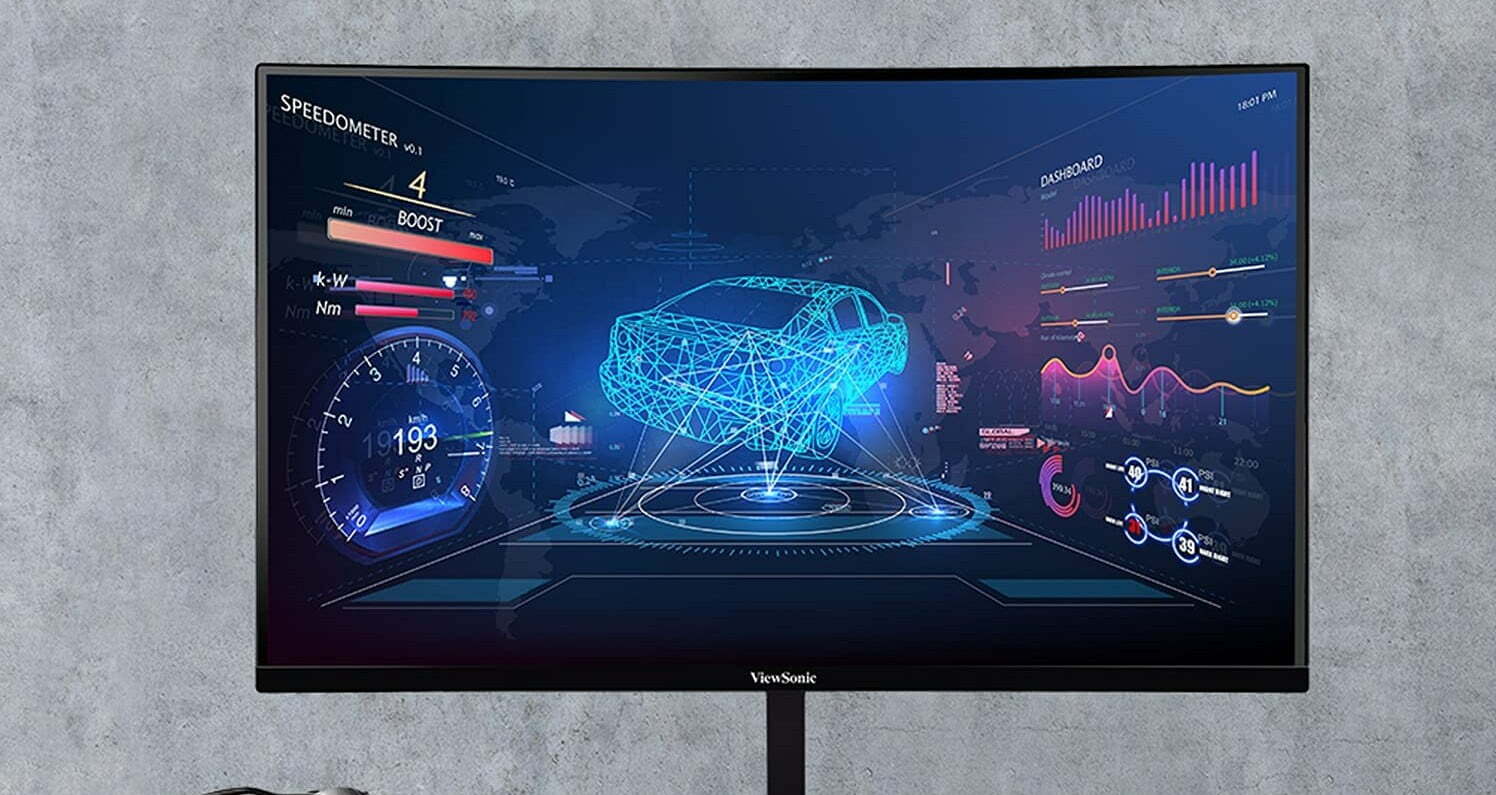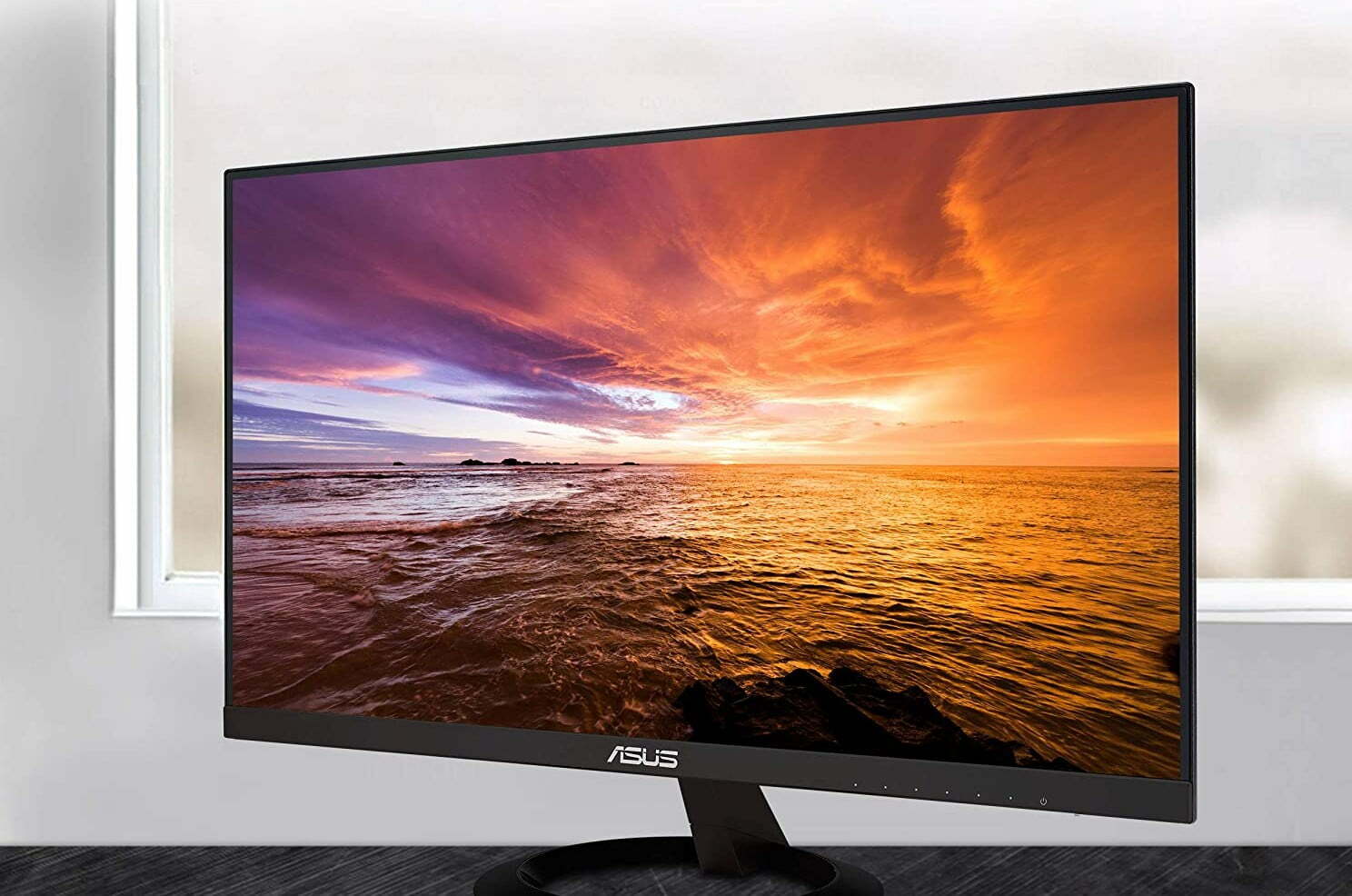Key Takeaways:
- How to connect a monitor to your PC is generally straightforward and requires no expertise
- Adapters are widely and easily available for connecting nearly any combination of port types
- Not all port types support both video and audio
Laptops are versatile and convenient options for many peoples’ daily computing needs, but for video and music production, high-end gaming, and more, only a desktop tower can provide the processing power necessary for demanding mediums. A dedicated monitor is a part of that package, but first-time users may be intimidated when it comes to their set-up. Thankfully it’s not as complicated as it seems- here’s all you need to know to find and set up the best monitor for your PC.
Tip: only a desktop tower can provide the processing power necessary for demanding mediums
Deciding on the right connector
The history of personal computing includes a long list of standardized and proprietary connection types, and even in 2021, there are a number of choices, though only one or two will really be relevant or useful to most.
- Related Post: Benefits of Having Two Monitors
- Related Post: What is the Best Computer Warranty?
HDMI
HDMI is probably the most common high-definition connection type out there and is the standard for nearly all consumer flatscreen televisions, many of which come with multiple HDMI ports for the largest variety of connectivity options. HDMI can transmit both video and audio and cables are both easily found and inexpensive. However, not all desktop PCs come with HDMI ports, especially if they use an integrated graphics processor. This means if your monitor is HDMI-only, you’ll need an adapter (generally this will be a DVI-HDMI adapter, also inexpensive and easy to find).
Although, if you’d prefer to use only an HDMI connection for a high-def resolution, then you may want to look into learning how to use your TV as a computer monitor.
Tip: HDMI is probably the most common high definition connection type out there
Warning: not all desktop PCs come with HDMI ports
DVI
DVI is the standard video-only connection type for both Windows and Mac towers. It transmits high-definition video but, unlike HDMI, it does not transmit audio. Most modern computer monitors have a DVI port and many will come with a DVI cable for connection to your computer.
Warning: it does not transmit audio
Some flatscreen televisions don’t feature a DVI connection but all should feature an HDMI port- which means you’ll have to use a DVI-HDMI adapter if your computer only has DVI. There is no quality difference between HDMI and DVI, so apart from HDMI’s audio streaming ability, they’re functionally the same.
Warning: Some flatscreen televisions don’t feature a DVI connection
- Related Post: What are the Best Computer Monitor Accessories?
- Related Post: How to Hook Up a Gaming Console to Your Computer
VGA, DisplayPort, USB-C, and Thunderbolt
Other connection types include VGA- an older, analog, video-only format that many flatscreen televisions and some computer monitors still include. Generally not used except for when connecting analog equipment to digital equipment and definitely the last resort in a pinch, since image quality and resolution would be severely compromised.
Speaking of older, analog connections, you might be interested in learning how to recycle your old computer monitor, especially if you’re upgrading to a display with DVI or HDMI-only ports.
Tip: Generally not used except for when connecting analog equipment to digital equipment
DisplayPort, USB-C, and Thunderbolt are all types of connections more commonly used when connecting laptops to monitors, though they’re all viable for desktop computers if provided.
Connecting Your Monitor to a PC
- Make sure your monitor is plugged into power, and with the computer powered down, connect the two components using your HDMI or DVI cable.
- Step 2- Power on your computer and wait a few seconds- a Windows or Apple logo should appear if you’ve connected everything correctly.
- Step 3- After your computer boots up, check display preferences to make sure your settings are correct and that you’re getting the screen resolution, refresh rate, and aspect ratio intended.
- In Windows, go to Settings>System>Display and check the display resolution and display orientation
- In macOS, go to System Settings>Display and check display resolution and picture orientation.
- See your operating system’s advanced display settings if anything needs tweaking.
- Related Post: How to Use Your Laptop as a Computer Monitor
- Related Post: Which is Best for Gaming: A Monitor or TV?
STAT:
Micro HDMI cables: This format combines video and audio into an interface that is small enough to connect to tablets, smartphones, and other mobile devices. They are 50% smaller than the standard HDMI cables.
https://www.quill.com/blog/tutorials/how-to-connect-a-monitor-to-your-desktop-or-laptop-computer.html
For reference, Brightness is often tuned between 50-80% from the factory. Adjust to taste.
https://www.ign.com/articles/2019/09/16/monitor-calibration-how-to-calibrate-monitor
DVI ports do not transmit audio data.
https://www.sony.com/electronics/support/articles/00010109
Sources:
https://www.techadvisor.co.uk/how-to/desktop-pc/how-set-up-new-pc-3446210/
https://www.techadvisor.co.uk/how-to/laptop/laptop-second-monitor-3674679/
*https://www.youtube.com/watch?v=Ad5zmFk80lU&ab_channel=ComputerPlanet




































![Best 27 Inch Computer Monitor in [year] 27 Best 27 Inch Computer Monitor in 2025](https://www.gadgetreview.dev/wp-content/uploads/how-to-buy-the-best-computer-monitor.jpg)
![Best BenQ Monitors in [year] 28 Best BenQ Monitors in 2025](https://www.gadgetreview.dev/wp-content/uploads/best-benq-monitor-image.jpg)
![Best ASUS Monitors in [year] 29 Best ASUS Monitors in 2025](https://www.gadgetreview.dev/wp-content/uploads/best-asus-monitor-image.jpg)
![Best Dell Monitors in [year] 30 Best Dell Monitors in 2025](https://www.gadgetreview.dev/wp-content/uploads/best-dell-monitor-image.jpg)
![Best HP Monitors in [year] 31 Best HP Monitors in 2025](https://www.gadgetreview.dev/wp-content/uploads/best-hp-monitor-image.jpg)
![Best Lenovo Monitors in [year] 32 Best Lenovo Monitors in 2025](https://www.gadgetreview.dev/wp-content/uploads/best-lenovo-monitor-image.jpg)
![Best ViewSonic Monitors in [year] 33 Best ViewSonic Monitors in 2025](https://www.gadgetreview.dev/wp-content/uploads/best-viewsonic-monitor-image.jpg)
![Best Gigabyte Monitors in [year] 34 Best Gigabyte Monitors in 2025](https://www.gadgetreview.dev/wp-content/uploads/best-gigabyte-monitor-image.jpg)
![Best Monitors for PS4 Pro Gaming in [year] 35 Best Monitors for PS4 Pro Gaming in 2025](https://www.gadgetreview.dev/wp-content/uploads/best-monitors-for-ps4-pro-image.jpg)
![Best Monitor for Xbox Series X in [year] 36 Best Monitor for Xbox Series X in 2025](https://www.gadgetreview.dev/wp-content/uploads/best-monitor-for-xbox-series-x-image.jpg)
![Best Acer Monitors in [year] 37 Best Acer Monitors in 2025](https://www.gadgetreview.dev/wp-content/uploads/best-acer-monitor-image.jpg)
![Best MSI Monitors in [year] 38 Best MSI Monitors in 2025](https://www.gadgetreview.dev/wp-content/uploads/best-msi-monitor-image.jpg)
![Best SAMSUNG Monitors in [year] 39 Best SAMSUNG Monitors in 2025](https://www.gadgetreview.dev/wp-content/uploads/best-samsung-monitor-image.jpg)
![Best LG Monitors in [year] 40 Best LG Monitors in 2025](https://www.gadgetreview.dev/wp-content/uploads/best-lg-monitor-image.jpg)
![Best AOC Monitors in [year] 41 Best AOC Monitors in 2025](https://www.gadgetreview.dev/wp-content/uploads/best-aoc-monitor-image.jpg)
![Best Philips Monitors in [year] 42 Best Philips Monitors in 2025](https://www.gadgetreview.dev/wp-content/uploads/best-philips-monitors-image.jpg)
![Best Monitors For PUBG in [year] 43 Best Monitors For PUBG in 2025](https://www.gadgetreview.dev/wp-content/uploads/best-monitor-for-pubg-image.jpg)
![Best Stream Decks in [year] 44 Best Stream Decks in 2025](https://www.gadgetreview.dev/wp-content/uploads/best-stream-deck-image.jpg)
![Best Monitors for Streaming in [year] 45 Best Monitors for Streaming in 2025](https://www.gadgetreview.dev/wp-content/uploads/best-monitor-for-streaming-image.jpg)
![Best Monitors For Flight Simulator in [year] 46 Best Monitors For Flight Simulator in 2025](https://www.gadgetreview.dev/wp-content/uploads/best-monitor-for-flight-simulator-image.jpg)




















